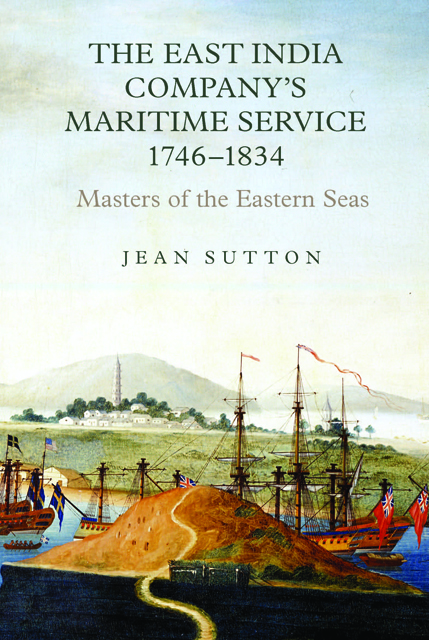Book contents
- Frontmatter
- Contents
- List of Illustrations: plates and maps
- Dedication
- Preface
- Larkins Family Tree
- Introduction
- Part I In the Company’s Service
- Part II William Larkins, Commander and Managing Owner
- Part III Thomas Larkins, Commander and Managing Owner
- Part IV John Pascall Larkins, Esq., Managing Owner
- Part V The New World Disorder
- Conclusion
- Appendix I
- Appendix II
- Bibliography
- Glossary
- Index
12 - The Fortunes of War
Published online by Cambridge University Press: 18 February 2023
- Frontmatter
- Contents
- List of Illustrations: plates and maps
- Dedication
- Preface
- Larkins Family Tree
- Introduction
- Part I In the Company’s Service
- Part II William Larkins, Commander and Managing Owner
- Part III Thomas Larkins, Commander and Managing Owner
- Part IV John Pascall Larkins, Esq., Managing Owner
- Part V The New World Disorder
- Conclusion
- Appendix I
- Appendix II
- Bibliography
- Glossary
- Index
Summary
CAPTAIN THOMAS Larkins needed a good voyage to turn the small capital he had made from the sale of his teas to good account. He was none too pleased to hear that Warren Hastings was stationed as the annual ship for St Helena, Benkulen and China for the season 1804/5, not a voyage likely to generate much profit in private trade. Thomas's spirits were not lifted by the bad weather, which scarcely let up from coming afloat in November. After leaving Gravesend they were exposed to extreme cold. Reports of gales and damage to shipping came in from Sheerness, Margate and Guernsey and there was ‘much distress at the Nore’. To add to Thomas's problems, while they were lying in the Downs a great gale of wind from the westward caused Warren Hastings to trip her anchor and she drifted on board Abergavenny, striking her on her starboard bow and carrying away the cathead and anchor stock. She then rebounded and drifted past but the damage warranted putting into Portsmouth for repairs. Thomas faced the prospect of being held back until the next convoy. The seamen, very superstitious by nature, did not like mishaps like that at the beginning of a voyage. They brought bad luck. Snow and sleet froze the night watches as the Indiamen sailed round to Portsmouth under convoy of the frigates Magicienne and Weymouth. The rest of the fleet headed for the Motherbank to take in troops while Warren Hastings sailed into dock. The atrocious weather continued while repairs were done. When completed Warren Hastings was directed to Cowes road to wait for convoy. Soon after she arrived Thomas was surprised to be joined by Royal George and shortly afterwards by Wexford and Henry Addington, other ships in the fleet. He heard that they had lost the convoy within twenty-four hours and, following Commodore Clarke's orders, had hung back, burning blue lights and firing guns to renew contact but without success. They had then proceeded down Channel, passing the Isle of Portland, only to be embayed off Chesil Bank. Abergavenny had been well ahead of the fleet, almost at Start Point, and had not responded to several signals.
- Type
- Chapter
- Information
- The East India Company's Maritime Service, 1746-1834Masters of the Eastern Seas, pp. 224 - 244Publisher: Boydell & BrewerPrint publication year: 2010

